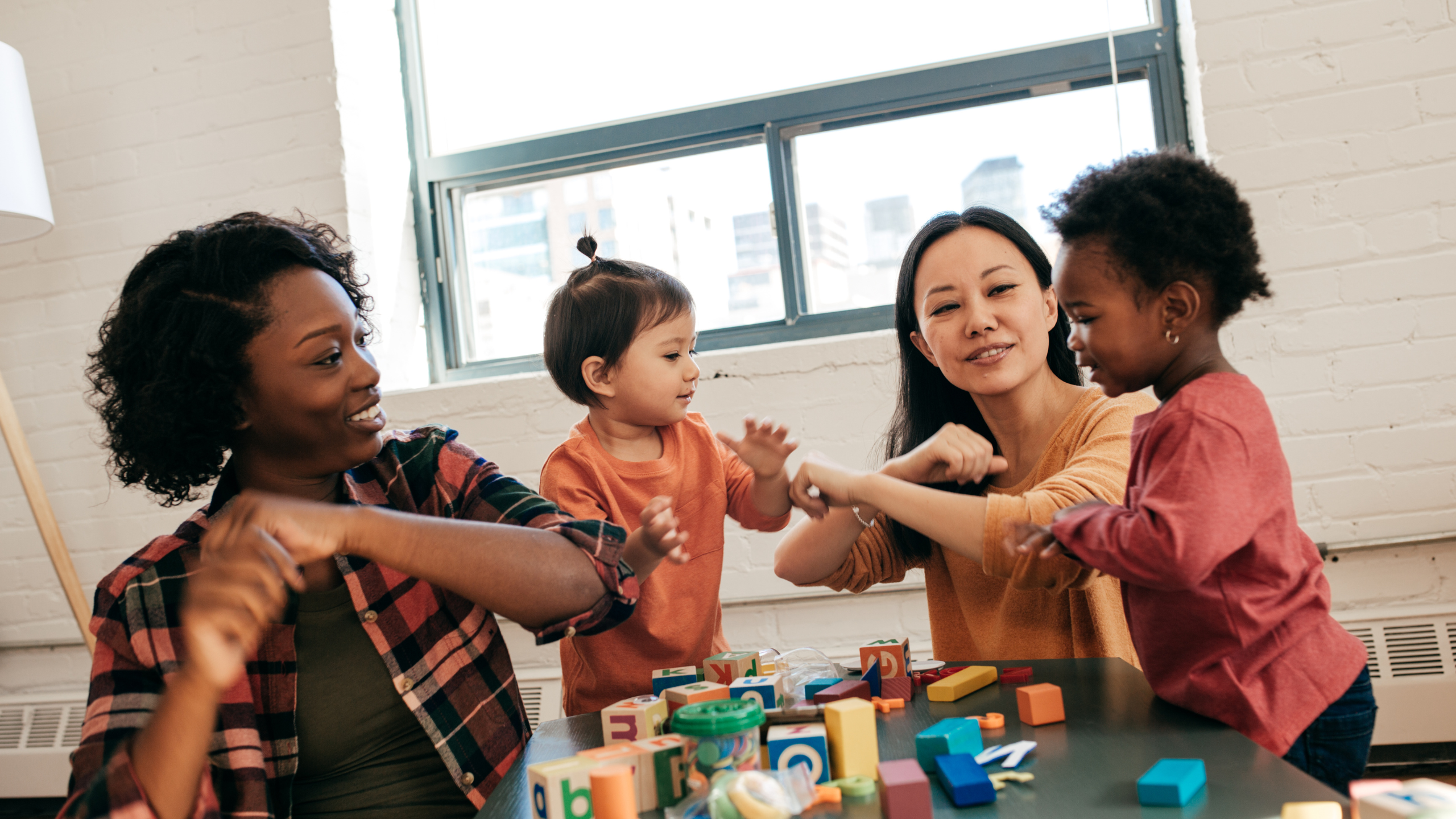As parents and educators, we understand that toddlers grow and learn a lot. That’s why creating a safe and fun place for them to explore is really important. This safe place helps them learn and grow well, and it’s essential for their whole life, not just when they’re little. Let’s explore how to make this kind of special place together. We’ll share helpful tips and ideas to make it happen!
At Paramus Daycare, children thrive in a safe and nurturing environment where play and learning go hand in hand. Our dedicated staff designs daily activities that promote social, emotional, cognitive, and physical development. We prioritize creating an enriching setting where kids can grow and explore to their fullest potential.
How to Establish an Exciting Environment for Learning Children
- Encourage Exploration: Encourage kids to explore and find new stuff. Give them blocks, cups, and toys that let them be creative and solve problems. Let them play with things, figure out how they work, and use their imagination. This helps their brain grow and learn.
- Promote Sensory Experiences: Incorporate sensory play into the environment by offering various textures, colors, and sounds. Provide opportunities for messy play with materials like playdough, sand, and water. Sensory experiences help toddlers develop their senses and refined motor capabilities, improve their mental capacity, and regulate their emotions.
- Cultivate Language Skills: Help kids learn more words by talking to them, telling stories, and reading books together. When you read to them, please talk about the pictures and what’s happening in the story, and ask them questions. Label things around them with words and images to help them learn more words and understand language better.
- Support Social Interaction: Arrange the environment to facilitate social interaction among toddlers. Create designated play areas where children can engage in cooperative and group activities. Include toys and games that promote sharing, turn-taking, and cooperation, fostering social skills and emotional intelligence.
- Provide Safe Spaces for Movement: Ensure the environment allows for safe physical activity and movement. Put up safety gates to keep people from using the stairs. Or hazardous areas, and secure heavy furniture to prevent tipping. Use soft mats or carpets to cushion falls and provide a comfortable surface for crawling, rolling, and active play. Incorporate child-sized furniture and equipment to promote independence and encourage toddlers to explore their physical capabilities.
- Integrate Nature: Bring nature inside by adding plants, letting natural light in, and using things that remind you of nature. Make sensory gardens with plants that feel and smell different, and use natural stuff like wood, rocks, and shells in play areas. Nature helps kids feel calm and happy, making the place excellent for learning and growing.
- Rotate Toys and Materials: Regularly rotating toys and materials keep the environment fresh and exciting. Introducing new items sparks toddlers’ curiosity and maintains their engagement in the learning process. Store toys in accessible bins or shelves, allowing children to independently choose and explore different activities.
- Personalize the Environment: Consider each toddler’s individual needs and interests when designing the environment. Create personalized spaces where children can display artwork, photos of their family and friends, and favorite toys. Provide opportunities for toddlers to make choices and exert control over their environment, promoting autonomy and self-confidence.
- Celebrate Diversity: Show different cultures, backgrounds, and abilities in books, toys, and pictures. Include things representing different experiences, languages, and traditions so everyone feels included. Talk about how we’re all similar and different, which helps kids understand and respect others. This makes the place friendly for everyone to learn and grow together.
Critical Considerations for Designing a Toddler-Friendly Environment
- Minimize Hazards: Remove potential hazards such as sharp edges, small objects, and choking hazards.
- Provide Age-Appropriate Toys and Materials: Choose toys and materials that are developmentally appropriate and safe for toddlers.
- Arrange Furniture for Easy Exploration: Arrange furniture to create clear pathways and open spaces for toddlers to move freely.
DIY Ideas for Sensory Bins, Quiet Corners, and Interactive Learning Spaces
- Sensory Bin: Fill a shallow container with dried pasta, rice, or beans and hide small toys or objects for a tactile treasure hunt. Incorporate different textures, shapes, and sizes of materials to stimulate sensory exploration. Add scoops, cups, and containers for pouring and transferring, encouraging fine motor skills and hand-eye coordination. Supervise children closely to ensure safe play and prevent ingestion of small items.
- Quiet Corner: Designate a cozy reading nook in a quiet room with bean bags, pillows, and soft blankets. Create a welcoming atmosphere with warm lighting and decorative elements like wall decals or hanging mobiles. Provide a selection of age-appropriate books, including picture books, board books, and storybooks, to cater to different interests and reading levels. Encourage children to relax and unwind with independent reading or quiet activities like puzzles or drawing.
- Interactive Learning Space: Make a cool drawing area in the room with chalkboard paint. Paint one or more walls with it so kids can draw and write on them. Give them different colored chalk and erasers, and keep them clean with damp cloths. Let kids draw, write, and use their imagination. Show off their drawings on the walls to celebrate what they make and inspire them to be even more creative.
Conclusion
Establishing a secure and engaging educational setting for toddlers requires thoughtful planning, creativity, and a commitment to their well-being. By incorporating elements of exploration, sensory play, and personalization, we can provide toddlers with a rich, engaging environment that supports their development in all areas. Whether at home or in a daycare/preschool setting, investing in a nurturing environment for toddlers is an investment in their future success and happiness. Let’s continue to prioritize the creation of environments where our little ones can thrive and reach their full potential.






